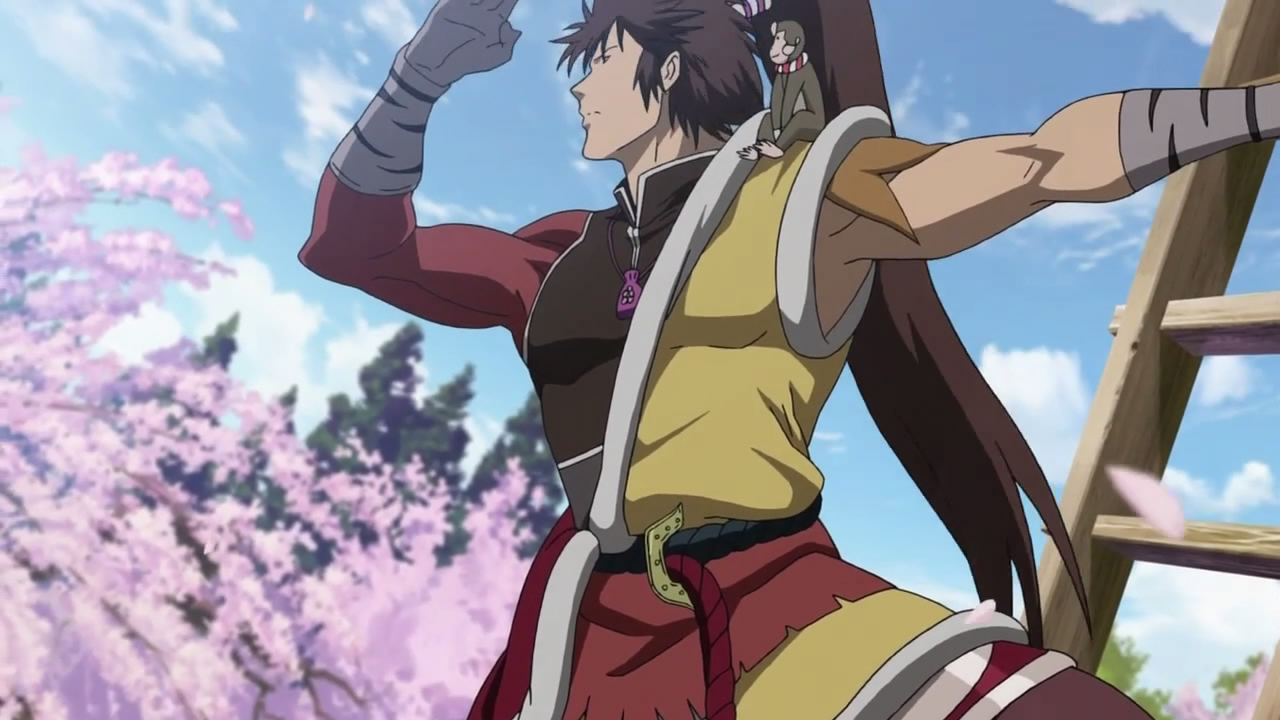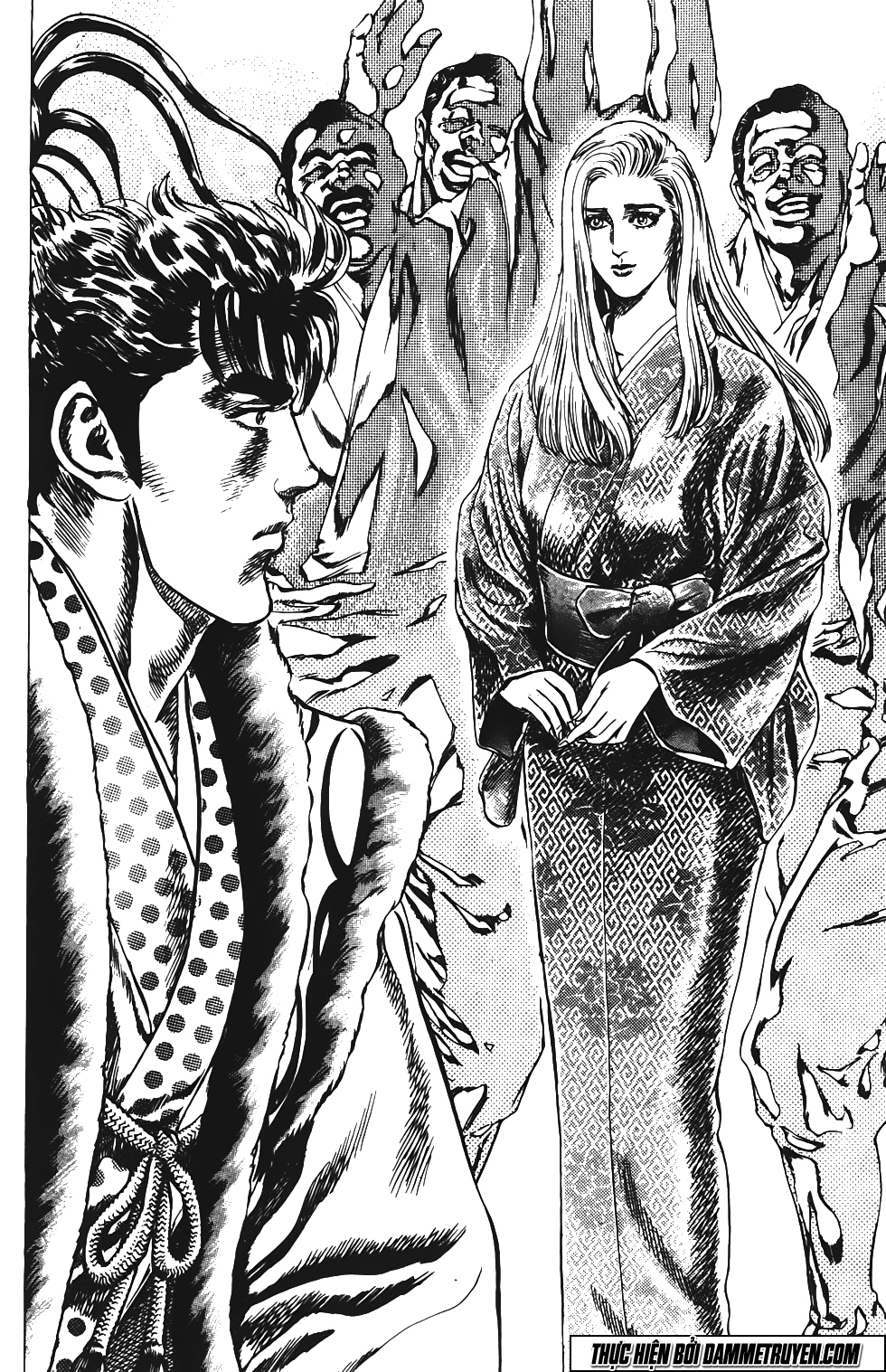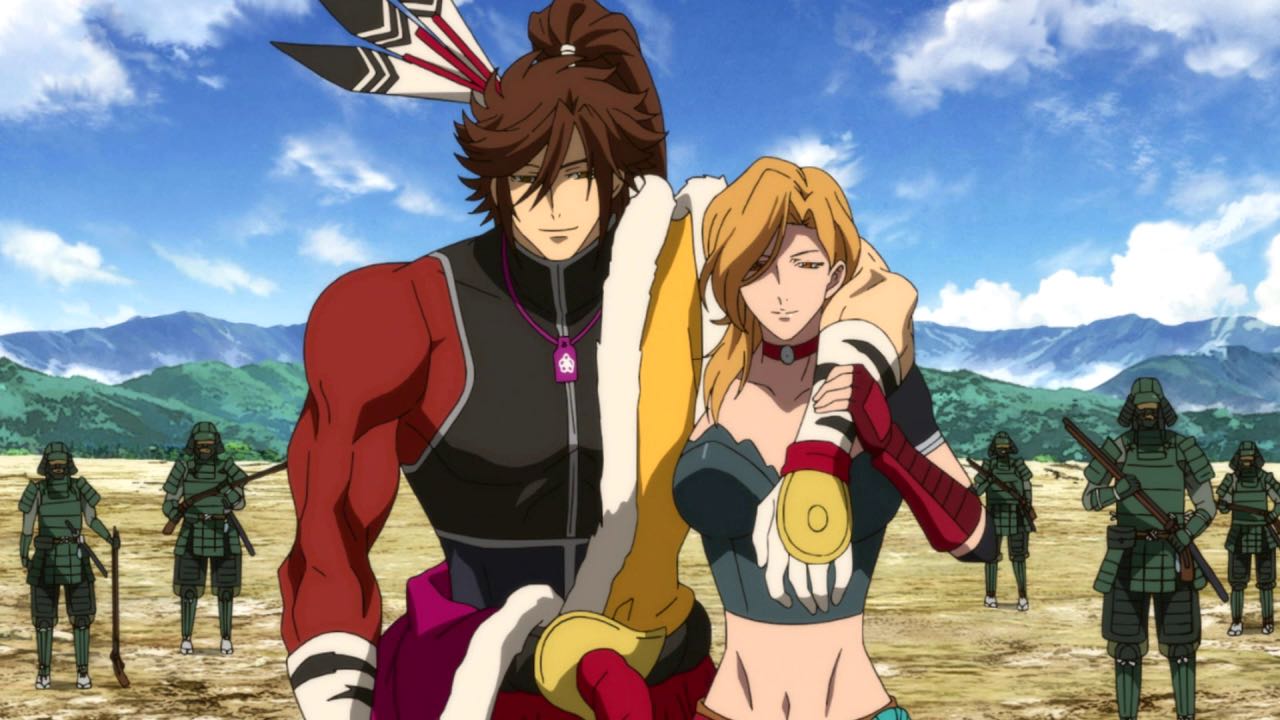Japan History: Maeda Keiji
Maeda Keiji

Photo credit: wikipedia.org
Maeda Toshimasu, (1543-1612) conosciuto come Maeda Keiji o Keijiro, era un Samurai Giapponese del periodo Sengoku (1467-1568).
Nato a Nagoya, era figlio di Takigawa Kazumasu, adottato poi da Maeda Toshihisa fratello di Maeda Toshiie. Servì sotto Oda Nobunaga assieme a suo zio, e inizialmente doveva essere lui l’erede del clan Maeda. Nobunaga spostò però il diritto di successione da Toshihisa a Toshiie, e Toshimasu perse la sua posizione. A quel punto, cominciarono i dissapori tra lui lo zio Toshiie, si dice infatti che litigassero spesso.
Nel 1581 si fece una reputazione sotto il comando dello zio in un conflitto nella Provincia di Noto. Mentre, durante la Battaglia di Komaki-Nagakute, tre anni dopo, Toshimasu andò a salvare Sassa Narimasa quando fu attaccato al Castello di Suemori.
A Kyoto incontrò Naoe Kanetsugu il karō (samurai e consiglieri di alto livello al servizio dei daimyō) di Uesugi Kagekatsu. I due divennerò molto amici e Toshimasu si unì al clan Uesugi nell’invasione di Aizu. L’invasione ebbe esito negativo, e Keiji guidò la retroguardia durante la ritirata. Nella battaglia riuscì comunque a dare una splendida dimostrazione di forza cavalcando sul suo inseparabile cavallo Matsukaze, ‘vento tra i pini’, mentre brandiva la sua lancia. Grazie a Keiji, le forze di Uesugi furono in grado di ritirarsi intatte, mentre il samurai ritornò alla capitale dedicandosi all’arte e alla letteratura.
Fu successivamente cacciato dalla campagna di Kyushu di Toyotomi Hideyoshi per i suoi modi selvaggi. Quando però Tokugawa Ieyasu sfidò nuovamente gli Uesugi nel 1600, Keiji lottò ancora con loro.
Nella battaglia contro i Mogami la leggenda narra che riuscì a rompere le linee nemiche con solo otto cavalieri, e a distruggere la loro formazione.
Dopo che il clan Uesugi si fu ritirato nel dominio di Yonezawa, Toshimasu rimase con loro.
Secondo la leggenda, alla morte di Keiji il suo cavallo Matsukage, che condivideva con il padrone la stessa personalità indomabile, scappò via per non essere mai più ritrovato. Era un esemplare magnifico che nessuno a parte Keiji era stato in grado di domare, e tanto possente da sopportare il peso del padrone che si diceva fosse imponente.
E’ invece ancora possibile vedere l’armatura di Keiji al Museo Miyasaka.

Photo credit: wikipedia.org
Keiji il Magnifico – Hana no Keiji

Photo credit: vignette3.wikia.nocookie.net
Il personaggio di Keiji Maeda fu così caratteristico e così eccentrico da essere scelto come protagonista di una serie di manga, Keiji il Magnifico (花の慶次 – Hana no Keiji). L’opera è raccontata da Keichiro Ryu e disegnata da Tetsuo Hara, meglio conosciuto come il disegnatore di Ken il guerriero.

Photo credit: Google images
Il manga racconta le avventure del più grande kabukimono mai esistito in Giappone. Il kabukimono è una persona eccentrica che ama distinguersi dagli altri nel modo di comportarsi e nell’aspetto, col fine ultimo di imporre la propria volontà sugli altri.
Keiji è figlio di Takigawa Masuuji e di una delle sue concubine. All’epoca la famiglia Maeda era in rapporti di vassallaggio con i Takigawa e durante un ricevimento Maeda Toshihisa incontra la ragazza e chiede ai Takigawa il permesso di sposarla. La prima notte di nozze la sposa confessa di essere già incinta del suo precedente signore. Ma invece di ucciderla (consuetudine in un’epoca in cui l’onore e il sangue nobile erano fondamentali) Toshihisa adotta il bambino. Così, alla sua nascita Keiji (il cui nome completo è Keijiro Toshimasu Maeda) diventa ufficialmente figlio di Toshihisa e quindi nipote di Maeda Toshiie, uno dei più ricchi feudatari giapponesi dell’epoca Sengoku. In questo periodo si svolgono grandi battaglie per decidere chi dominerà il Giappone dopo Oda Nobunaga. Keiji, cresciuto sui campi di battaglia e dotato di grande forza, partecipa a molti di questi eventi.

Photo credit: ayakashi-ghost-guild.wikia.com
Il suo è un personaggio dai forti senso dell’onore e personalità, e segue il principio base dell’essere kabukimono fino in fondo. Pertanto, Keiji cerca di imporre sempre la propria volontà, consapevole che ciò significa essere liberi non solo di agire a proprio piacimento, ma anche di essere uccisi “come un cane”.
In eterna lotta con lo zio, che più volte cerca di farlo uccidere, Keiji rimane nel clan e quindi sotto l’autorità dello zio stesso solo fino alla morte di Toshihisa. Poi inizierà a comportarsi in modo tale da venir cacciato dal clan. Ciò salverà l’onore del clan stesso, in quanto un samurai che abbandona volontariamente il proprio padrone lo disonora.
I personaggi
Vari personaggi di finzione accompagnano Keiji nei suoi viaggi e avventure.
Nel primo capitolo del manga Keiji incontra e si lega al cavallo “diabolico” Matsukase, (copia di Re Nero, il cavallo di Raoul – Ken il guerriero) . E’ un animale più grande del consueto e pertanto capace di sopportare il peso di Keiji, ma che nessun altro riesce a cavalcare. Da allora i due sono inseparabili.

Photo credit: Google Images
Per un certo periodo Keiji è accompagnato dalla piccola Ofu. Incontra la ragazzina quando si trova a confrontarsi con un esperto di arti marziali di nome Gankibo. Ofu lo deve seguire portando sulla testa un secchio in cui raccoglie le orecchie dei nemici morti. Gli spiriti dei caduti la tormentano e quando Keiji sconfigge Gankibo libera Ofu dal suo compito, dando anche pace agli spiriti. Ofu in realtà ha 14 o 15 anni, ma sembra una bambina perché ha deciso di non crescere.
Il piccolo shinobi Sutemaru è il primo vassallo che si mette al servizio di Keiji. All’inizio Sutemaru fa parte della truppa di ninja di Kaga, al servizio di Maeda Toshiie, e vuole uccidere Keiji e Matsukase (il cavallo che ha travolto e ucciso suo fratello). Presto tuttavia Sutemaru decide di abbandonare la truppa dei ninja e di rimanere con Keiji, che serve fedelmente nella speranza, di riuscire a ucciderlo. Sutemaru combatte con armi da taglio, kunai e esplosivi, oltre a fare spesso da esploratore per Keiji. Peculiari del personaggio sono il fatto di canticchiare sempre quando combatte e di non riuscire a mentire perché ogni volta gli occhi gli diventano strabici.
L’ultimo personaggio importante è Lisa, una giovane donna bellissima e dai capelli biondi. Suo padre Yoshiro è figlio di Sen no Rikyu e di una donna occidentale, portata come schiava su una nave pirata europea che si scontrerà con i mercanti di Sakai. Yoshiro conoscerà Keiji e gli mostrerà un ritratto di sua figlia. Il kabukimono si innamorerà perdutamente della ragazza, contesa però anche dal pirata spagnolo Carlos e dal re di Ryukyu (oggi Okinawa, isola principale dell’arcipelago Ryukyu).
Invece tra i personaggi storici incontrati da Keiji vi sono sicuramente suo zio Toshiie Maeda (noto anche come Mataza il lanciere), il kanpaku (reggente dell’Imperatore) Hideyoshi Toyotomi, e Tokugawa Ieyasu suo successore; ma anche Nobunaga Oda, ex padrone di Hideyoshi e Ieyasu, e Hattori Hanzo, capo dei ninja di Iga al servizio di Ieyasu; incontrerà anche il già citato maestro di cerimonie Sen no Rikyu, e il comandante militare della regione Yamashiro (dove si trovava la capitale del tempo, Kyoto) Kanetsugu Naoe; e ancora, il signore di Kanetsugu, Kagekatsu Uesugi, nipote e successore del noto daimyo Uesugi Kenshin; Mitsunari Ishida, favorito di Hideyoshi e cugino di Kanetsugu Naoe, e Date Masamune, daimyo delle terre settentrionali del Paese.
Dopo la battaglia di Sekigahara, nella quale Mitsunari Ishida e Ieyasu Tokugawa si giocano il controllo del paese, Keiji si trova dalla parte perdente. In realtà si è schierato e registrato come vassallo di Kanetsugu Naoe per aiutare il clan Uesugi. Ieyasu aveva provocato gli Uesugi per cercare una guerra al solo scopo di far muovere Mitsunari e farlo scoprire. Keiji decide quindi di incontrare Ieyasu come ambasciatore degli Uesugi. Si rade a zero i lunghi capelli come un bonzo e rinuncia al compenso cui ha diritto come samurai del clan. Fatta la pace, si tiene fuori dalla scena finché Kanetsugu non gli chiede di andare con lui nel suo feudo, proposta che Keiji accetta. La mattina successiva, regala il denaro rimastogli e mette in piedi una festa improvvisata. I balloon ci raccontano che si trasferirà con Lisa presso il clan Naoe e smetterà di essere un kabukimono.
Morirà circa 12 anni dopo, sotto il regno di Tadakatsu Uesugi, erede di Kagekatsu.

Photo Credit:truyentranhpro.com
Sengoku Basara
Sengoku Basara (戦国BASARA) è un anime diviso in due serie, tratto dal videogioco Devil Kings della Capcom, e composta ciascuna da tredici episodi. Dal videogioco è stato tratto anche un manga diviso in tre volumi denominato Sengoku Basara Ranse Renbu. Creato da Kairi Shimonotsuki e pubblicato dalla casa editrice Udon Entertainment, il manga è pubblicato in Italia dalla J-Pop. Le due stagioni dell’anime sono state invece acquistate da Yamato Video che lo ha annunciato via Facebook, e fa parte del “Secret Project” dell’editore milanese. La serie è in fase di trasmissione sul nuovo canale youtube della Yamato a partire dal 30 ottobre 2013.
Il 4 giugno 2011 in Giappone è uscito il lungometraggio cinematografico intitolato Sengoku Basara: The Last Party.
L’anno successivo è andato invece in onda un adattamento live action dal titolo Sengoku Basara : Moonlight party, trasmesso dal 12 luglio al 20 settembre 2012.
Due anni dopo, nel 2014, è stata poi trasmessa la terza serie televisiva: Sengoku Basara: Judge End, ispirata alle vicende del capitolo Sengoku Basara: Samurai Heroes del videogame.
Personalmente credo che il personaggio di Keiji sia molto interessante e soprattutto che abbia bisogno di essere conosciuto più approfonditamente. Il suo carattere si distingue dagli altri, riesce ad andare contro la serietà che caratterizzava il personaggio del Samurai. Lo sento molto vicino come anima instabile ed eccentrica, sempre alla ricerca di qualcosa che non riesce ad ottenere, ma che probabilmente ha già in mano. Il suo rompere gli schemi, tanto da renderlo in grado di fare scherzi ai suoi parenti, di fregarsene dell’etichetta e del suo essere. Ma anche il suo sentirsi un bambino in un corpo troppo grande, soprattutto per l’epoca, e il suo essere diverso, lo rende una persona da conoscere e da amare.

Photo credit: www.Tumbr.com
Il suo amore per Lisa, è poi stata una delle prime volte in cui si è affrontato il rapporto oriente-occidente. Un Samurai che si innamora di un’Europea era all’epoca una sorta di scandalo ed assolutamente qualcosa di inusuale. Bellissima storia tra i due, che continua a far parlare e ad essere fonte di ispirazione per fumetti e videogames.
“Ognuno è debole e fa affidamento sugli altri. Mentre ci tendiamo l’uno verso l’altro, mentre diventiamo amici o combattiamo, il legame che creiamo da forma al nostro futuro. “
Keiji Maeda – Sengoku BASARA

Photo credit: Google Images
Condividi:
- Fai clic per condividere su Facebook (Si apre in una nuova finestra)
- Fai clic qui per condividere su Twitter (Si apre in una nuova finestra)
- Fai clic qui per condividere su Tumblr (Si apre in una nuova finestra)
- Fai clic qui per condividere su Pinterest (Si apre in una nuova finestra)
- Fai clic per condividere su Telegram (Si apre in una nuova finestra)
- Fai clic per condividere su WhatsApp (Si apre in una nuova finestra)
- Fai clic qui per condividere su Reddit (Si apre in una nuova finestra)
- Fai clic qui per stampare (Si apre in una nuova finestra)






